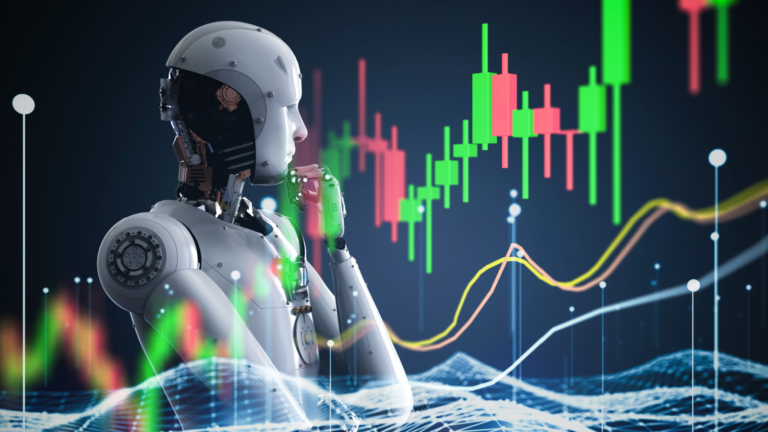Hello, Reader.
Thomas Yeung here with today’s Smart Money.
In early 2021, a group of online retail investors decided that GameStop Corp. (GME) was worth a lot of money.
It didn’t matter to them that the video game retailer sold shiny plastic discs. Nor were they turned off by the firm’s scattershot strategy involving Web3, NFTs, and crypto.
As long as others were snapping up shares, retail investors were happy to value GameStop at $10 billion… $20 billion… or more.
Institutional investors stood on the sidelines in disbelief. But it turns out that “smart money” sometimes falls for the same traps.
In 2023, institutional investors began pouring money into the speculative artificial intelligence stocks. Companies like SoundHound AI Inc. (SOUN) and Nano-X Imaging Ltd. (NNOX) became multibillion-dollar companies overnight despite lacking profits or clear business strategies to achieve them.
Even large companies with AI stories like Alphabet Inc. (GOOGL) and Amazon.com Inc. (AMZN) were bid to unsustainably high levels.
In other words, the investors who disregarded worthless meme stocks had fallen into the same pattern of buying assets because everyone else was doing the same.
Now, we’re reckoning with the fallout.
On Monday, prices of the Tokyo Stock Exchange’s Nikkei index fell 12%, its largest single-day drop since the “Black Monday” crash of 1987. European and American stocks followed suit. Shares of the tech-heavy Nasdaq-100 opened 7% lower, driven by a selloff in everything from AI players to Bitcoin miners.
At first glance, it seems like the whole road to artificial general intelligence (AGI) is falling apart.
However, as I’ll discuss in today’s Smart Money, that is certainly not the case.
The Forces at Work
If we look a little closer, this week’s selloff indeed seems reminiscent of the 1987 Black Monday crash, when the Dow Jones Industrial Average gave up 22% of previous gains in a single day. Shares of the hottest stocks had simply been bid up too far, too fast. All it took was slightly negative economic news to turn these high-priced moonshots into sinking ships.
Here’s the Federal Reserve’s explanation of the crash of 1987…
Stock markets raced upward during the first half of 1987. By late August, the DJIA had gained 44 percent in a matter of seven months, stoking concerns of an asset bubble. In mid-October, a storm cloud of news reports undermined investor confidence and led to additional volatility in markets. The federal government disclosed a larger-than-expected trade deficit and the dollar fell in value. The markets began to unravel, foreshadowing the record losses that would develop a week later.
Essentially, America still had solid economic performance that year. GDP grew at 3.5% in 1987 and accelerated to 4.2% the following year. Consumer spending also improved.
Instead, the 1987 selloff was largely technical– related to a mix of high valuations, large options trades, lack of liquidity, and profit-taking.
Today, we’re seeing the same technical factors at work.
On Friday, August 2, a worse-than-expected jobs report raised fears of a hard landing. The Japanese government raised its interest rates, forcing yen carry trade investors to unwind their yen-based bets. And high-profile profit-taking, like Warren Buffett’s 50% sale of his stake in Apple Inc. (AAPL), caused others to do the same. Shares of crypto miners, AI chip firms, and retail-dominated meme stocks fell double digits or more as Wall Street began to realize their collective mistake.
Fortunately, the fundamentals today also reflect many strengths of the late 1980s that helped stocks recover from the Black Monday selloffs. GDP growth is accelerating. Corporate profits are too, with the average S&P 500 company expected to hit 10.8% earnings growth in 2024 and 14.8% in 2025. And unemployment remains well below its long-term average of 5.7%.
Perhaps most importantly, the road to AGI remains intact. Surprising winners of the AI Revolution –like multinational pharmaceutical company Bristol-Myers Squibb Co. (BMY) – are trading as if nothing happened. Eric will provide more information about Bristol-Myers in Saturday’s Smart Money. So, be sure to keep an eye out in your inbox.
We’ve been discussing “Road to AGI,” and it’s surprising winners, for a little while now. And we will continue to do so in preparation for an upcoming free event and special series of reports for Eric’s elite trading service The Speculator. (We’ll send you an email when you can register for the event.)
At The Speculator, Eric constantly monitors economic and fundamental trend data from around the globe to find and research asymmetrical opportunities… and make 1,000%+ gains off multiple megatrends.
To prepare for the coming opportunities that AGI will bring – become a member of The Speculator today.
If you set yourself up now, you have the potential to build more wealth than you ever imagined possible – all thanks to the world-defining power of AGI.
Regards,
Thomas Yeung, CFA
Markets Analyst, InvestorPlace.com
P.S. Eric Fry, here. I’ve been telling you I’m putting together a presentation and a number of special reports on AGI.
And I want to know what you think.
What do you want to see me talk about during that presentation? What do you know about AGI… and what do you want to know more about? You can send your feedback to ericfryfeedback@investorplace.com.


